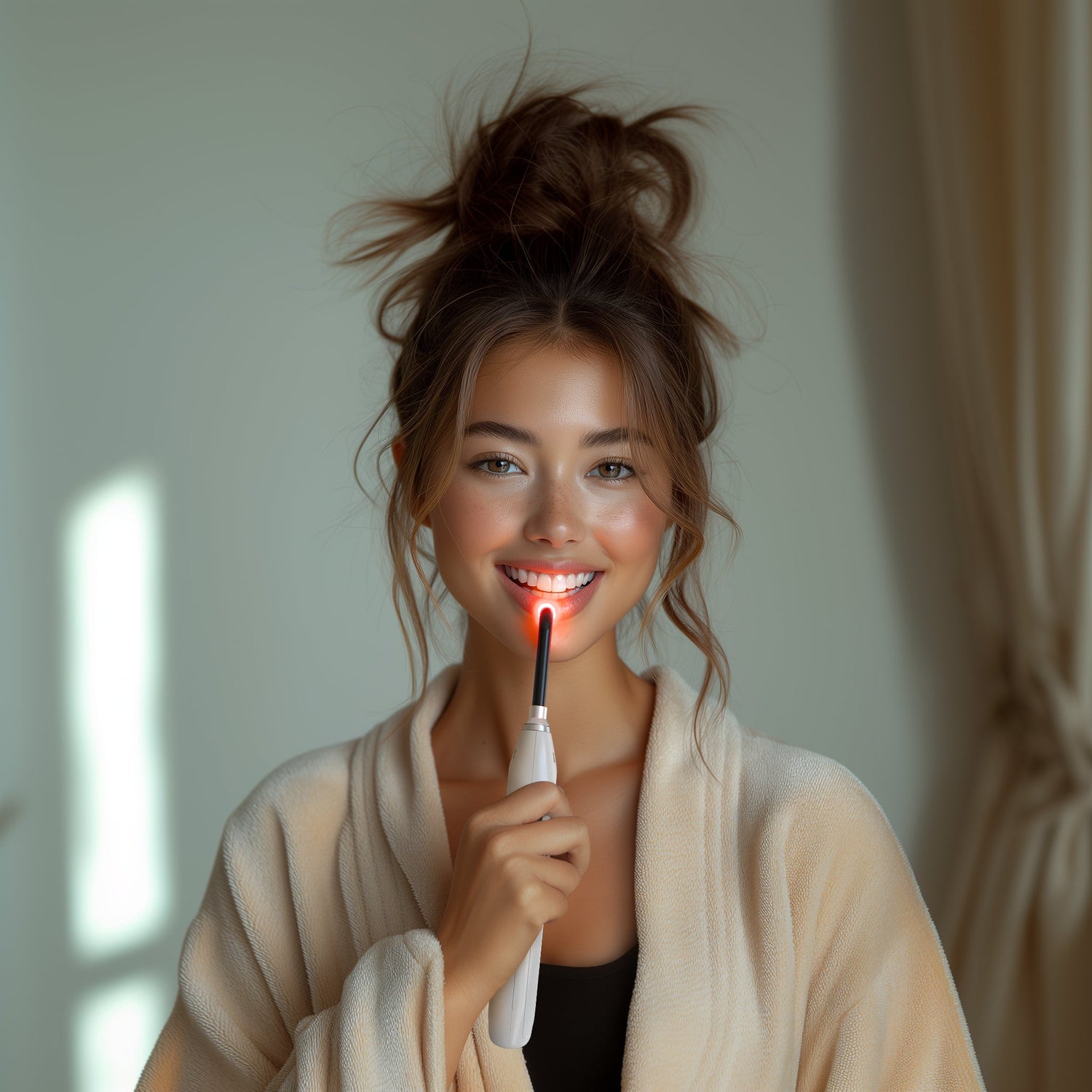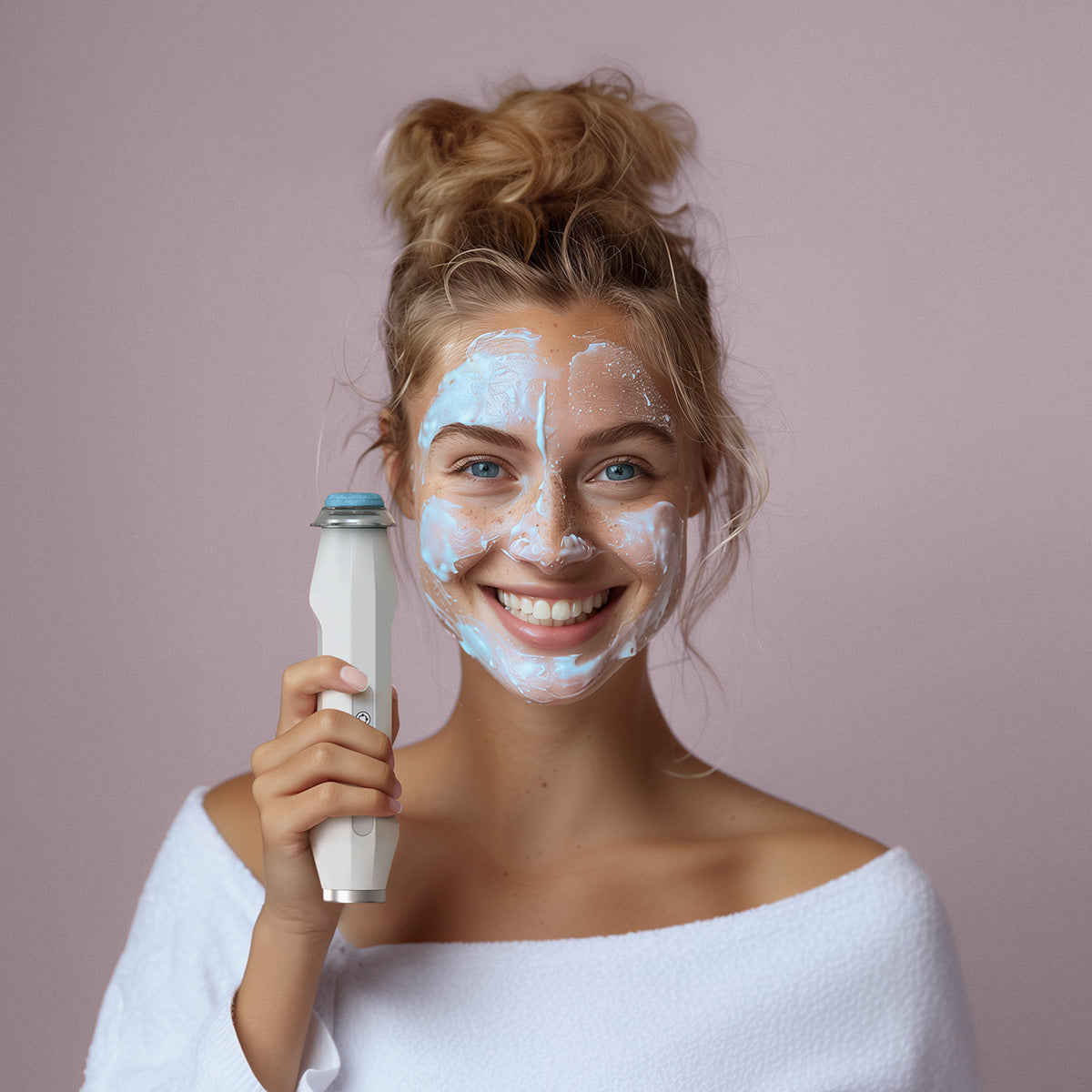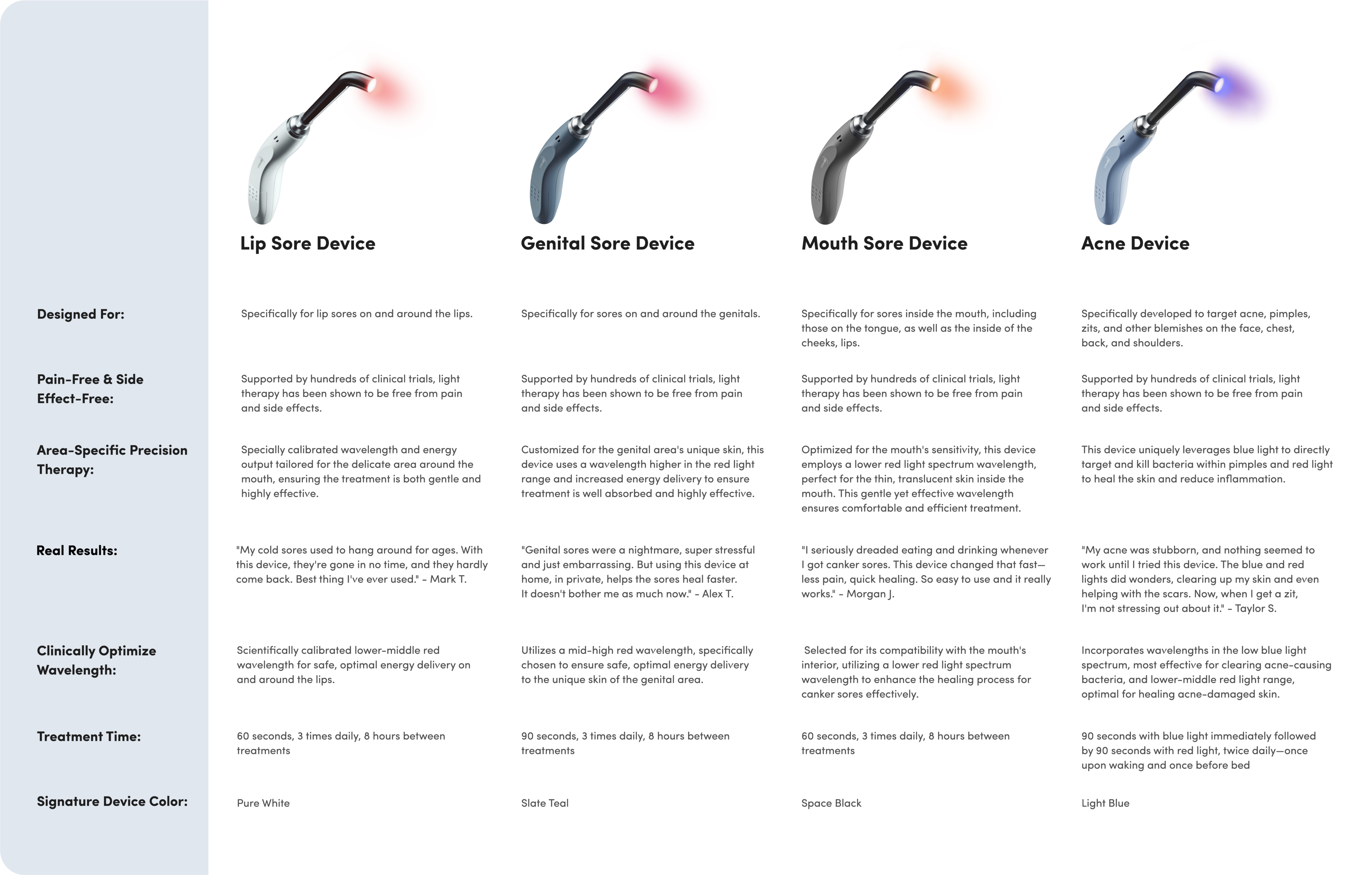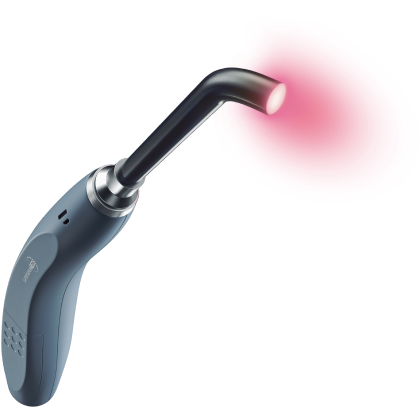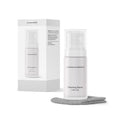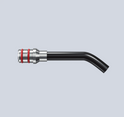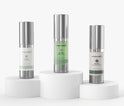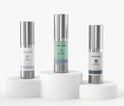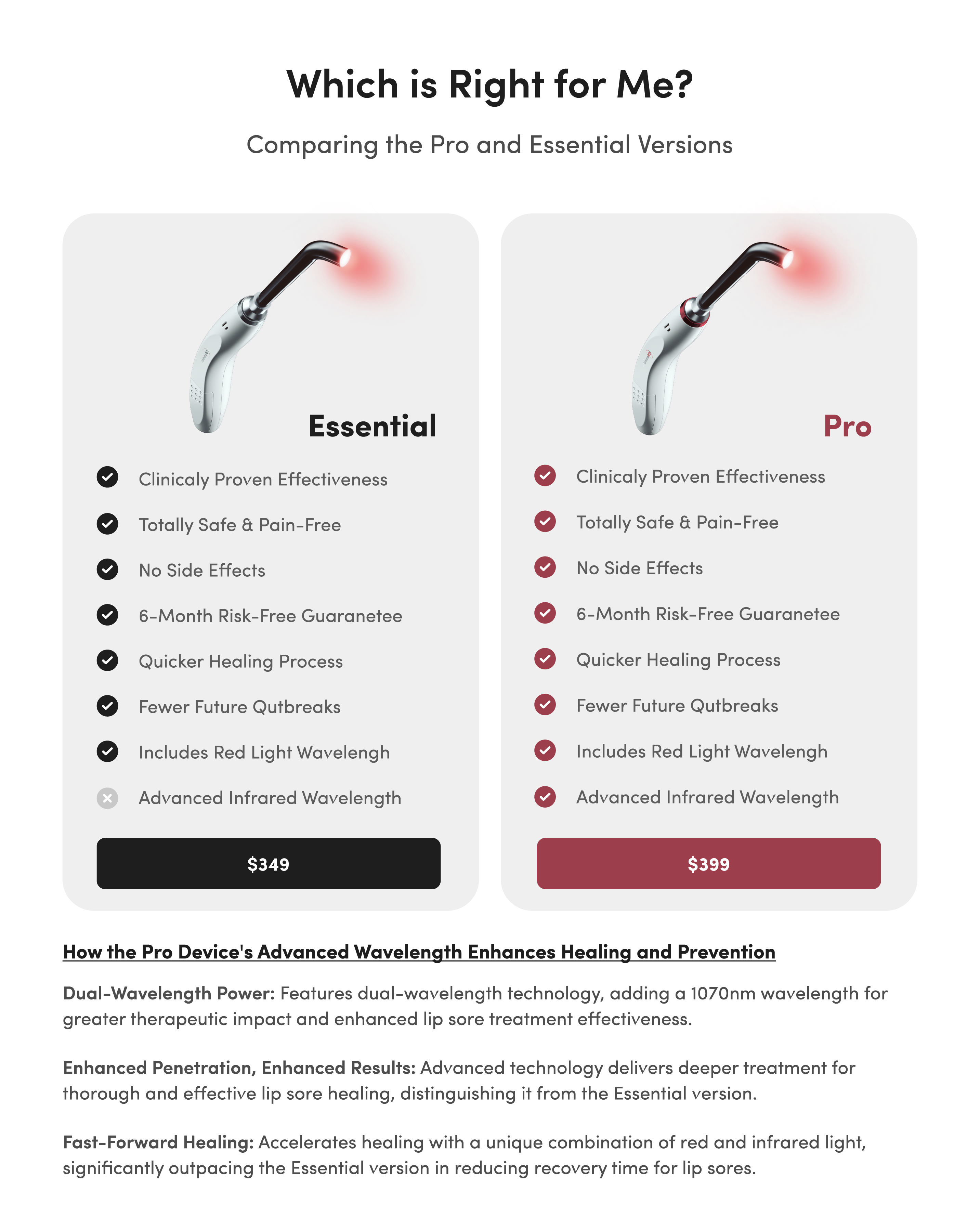How To Know if It’s a Cold Sore on Your Chin (Plus What To Do)

You look in the mirror and see a spot on your chin. At first you think it’s a pimple, but then you wonder... could that be a cold sore on your chin?
Most people know that cold sores appear around the lips and mouth, but can they form on your chin, too?
Is It Normal to Get a Cold Sore on Your Chin?
A cold sore, sometimes called a fever blister, is a small, painful cluster of blisters. Cold sores form in response to an infection with the herpes simplex virus, type 1 (HSV-1). This extremely common viral infection spreads rapidly from person to person, usually through close contact with bodily fluids like saliva.
Once you’ve been infected, you’ll have HSV-1 for the rest of your life. When it’s not causing an outbreak, the virus lies dormant in nerve cell endings until a trigger stirs it up. Cold sores then form on the skin above those nerves.
Although cold sores usually form on or around the lips, they can appear on other body parts as well. Since HSV-1 typically resides in the nerves near the mouth, it’s entirely possible for a cold sore to erupt on your chin.
If you’ve never had a cold sore before, you may notice other symptoms as well, such as:
- Fever
- Lethargy
- Swollen lymph nodes
Although these symptoms are unpleasant, they’re normal for a first HSV-1 outbreak. Subsequent outbreaks are usually much less severe, with only localized symptoms. Unfortunately, once you experience an outbreak on your chin, you’re much more likely to have cold sores appear on your chin again in the future.
Make Sure It’s Really a Cold Sore
Before you treat a cold sore on your chin, you’ll want to make sure it really is a cold sore and not another skin condition.
Below are a couple of other common conditions you might mistake for a cold sore on your chin.
A Pimple on Your Chin
Most people deal with acne at some point in their lives, particularly during adolescence. High rates of oil production on the face lead to more acne there than elsewhere on the body. When this oil combines with bacteria and dead skin cells, pores become clogged and acne forms.
In line with an updated version of “face mapping,” skincare experts have found that acne concentrated on the chin is usually due to hormonal changes, which commonly include:
- Puberty
- Pregnancy
- Breastfeeding
- Menopause
- Hormone replacement therapy
- Hormonal birth control usage
- Pre-menstrual cycle
You can generally tell the difference between a cold sore and a pimple by looking. Pimples often cause a raised, painful, red bump. If they remain deep under the skin, you may not see any change in the surface except for the bump.
Eventually, many pimples come to a head, which is when they may resemble cold sores. They fill with white pus and, if left alone, usually resolve without releasing their contents. Cold sores, however, fill with a clear fluid and burst on their own after several days. They also cause a tingling, burning sensation under the skin before they appear.
Ingrown Hair
The lesion on your chin could also be an ingrown hair. An ingrown hair occurs when a hair grows back into the skin instead of out into the air, forming a red papule that may look like a pimple. Although ingrown chin hairs are more common in men who shave the area, anyone can develop an ingrown chin hair.
Ingrown hairs don’t usually cause pain until inflammation develops, and they lack the telltale burning sensation of a cold sore. They may also fill with pus, similar to a pimple. If you examine the bump closely in a mirror, you may even see a hair in the center of it.
What to Do About the Cold Sore on Your Chin
Cold sores pass through five stages, and how you care for your cold sore depends on which stage it’s in:
- Burning and itching signal a cold sore is forming.
- Blisters develop in a small cluster.
- Blisters burst, releasing their fluid.
- Blisters dry up into yellow and brown crusty scabs.
- Scabs heal and healthy skin grows.
Because the cold sore virus thrives in a moist environment, it’s best to keep your cold sore as dry as possible throughout the first four stages. As the scabs heal, however, you can keep the spot moist for comfort and to prevent cracking.

Concealing a Chin Cold Sore
It’s easy enough to swipe some lipstick to cover up a cold sore on your lip, but a cold sore on your chin is a little trickier.
Full-coverage foundation and concealer are important tools to mask a cold sore on your chin. There are even several useful products formulated specifically for men. Be sure to use disposable applicators to avoid contaminating makeup brushes and sponges with the cold sore virus.
Preventing Future Chin Cold Sores
HSV-1 can be reactivated by a number of factors, but you can minimize the risk of an outbreak by taking a few precautions.
Know Your Triggers
Keeping a diary of HSV-1 outbreaks is a great way to learn about your specific triggers. Perhaps you always get a cold sore when you’ve spent time in the sun or wind. Some women find that cold sores flare up during their period.
Avoid Eating Triggering Foods
Although various people may have different foods that trigger flare-ups of HSV-1, some foods to avoid include:
- Foods rich in L-arginine, such as nuts and red meat
- Highly processed foods
- Acidic foods
- Spicy foods
Maintain a Healthy Immune System
A healthy immune system helps keep the HSV-1 virus at bay. Common sense health measures can support your immune system and help prevent outbreaks of cold sores on your chin. These measures include:
- Eating a healthy diet full of fruits and vegetables
- Exercising regularly
- Only drinking alcohol in moderation
- Managing stress
- Sleeping 7–9 hours per night
Use Red Light Therapy
Clinical studies show that red light therapy’s healing properties decrease cold sore duration and prevent future outbreaks. The Luminance RED Lip Sore Treatment Device is an FDA-registered device specifically designed to help manage cold sore outbreaks with this type of red light technology.


